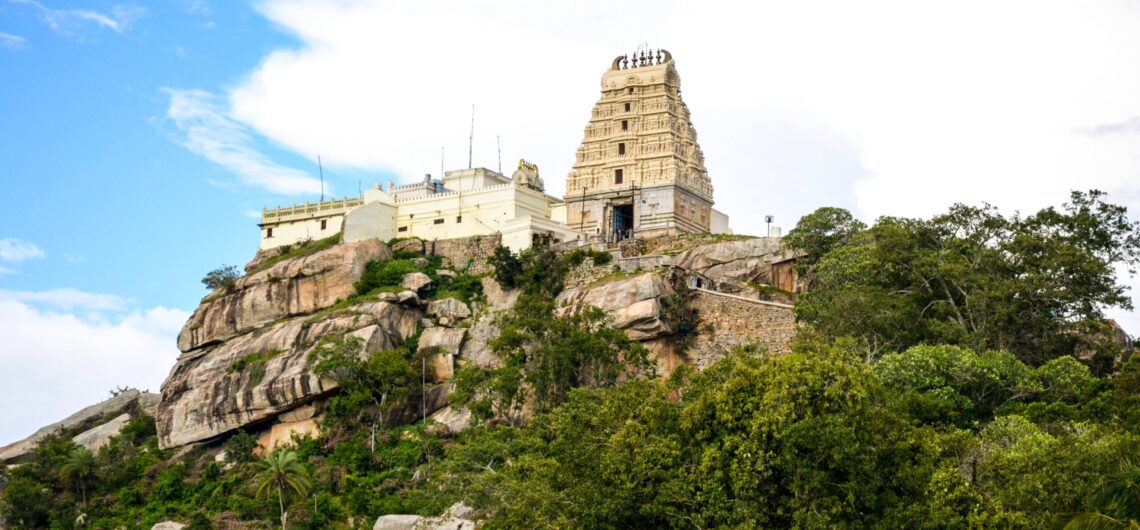Melukote Day Trip
- Destinations
- Akka Thangi Kolaga, ancient temples, Bangalore getways, Cheluvanarayana Swamy Temple, Day trips from Bangalore, dhanushkote, iyengar puliyogre, melukote, melukote day trip, melukote iyengars, melukote kalyani, melukote puliyogre, Rayagopuram, Subbana Mess, Thonnur lake., weekend getaways from bangalore, yoga narasimha temple
It’s never too easy to get bored in a city like Bengaluru. Come weekend, and the travel bug within me wanted to get away and explore someplace I had never been to. The craving for a long drive, the urge to explore ancient temples and a dose of nature was want I was seeking for and found it on the map, 133 kms away from Bengaluru – in a place called Melukote. This lesser-known historical place is nestled on the hilly region called Yadugiri, surrounded by a verdant valley that offers spectacular views of the greenery around.

This small town offers a perfect backdrop to see history, culture and tradition intertwined with its old temples, people and way of life. Alongside the temples, there are several maths (monasteries), choultries, colleges and schools for teaching Sanskrit. The town is occupied by Vaishnavas, (those who follow Lord Vishnu), particularly the Madyam Iyengars and is also an important place of pilgrimage for followers of Sri Ramanujacharya. You wouldn’t want to miss out on the food here, which is very distinctive of the Iyengar community, comprising of puliyogare and sweet pongal. It’s a great place to spend an entire day basking in the charm of this town, that still retains its timeless character.
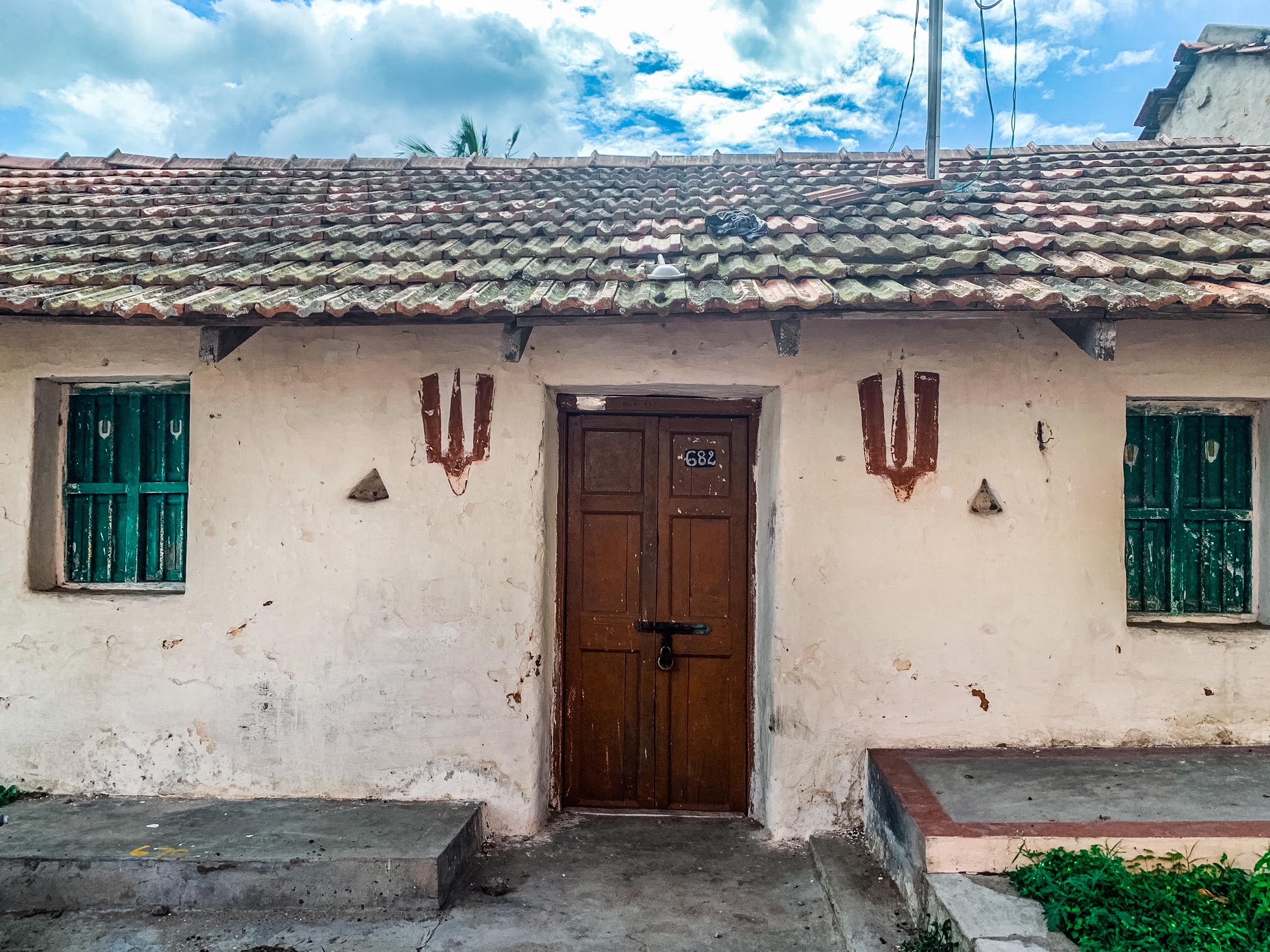
We started from Bengaluru at 7am in the morning, following the location on google map, that took us through the Nelamangala route. Our breakfast stop was at the Shark hotel where the idlis served with chutney are quite a treat.
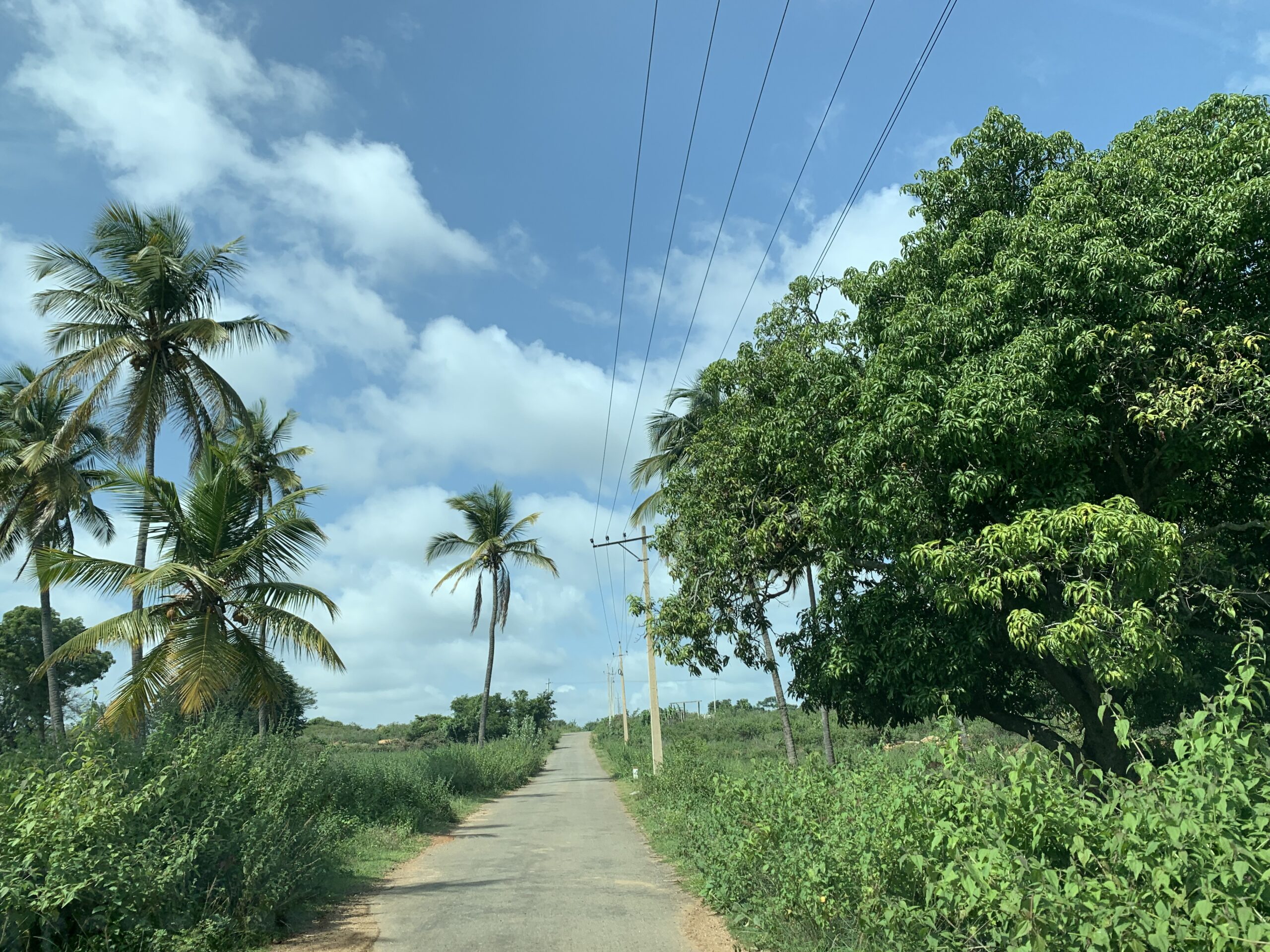
The route further deviates from the highway passing through small villages and fields and as we get closer to the destination, we come across small patches of land where Marigold flowers are cultivated. We reach Melukote at 11am and head straight to the famed Cheluvanarayana Swamy Temple where the presiding deity is Lord Vishnu in the form of Cheluvanarayana.
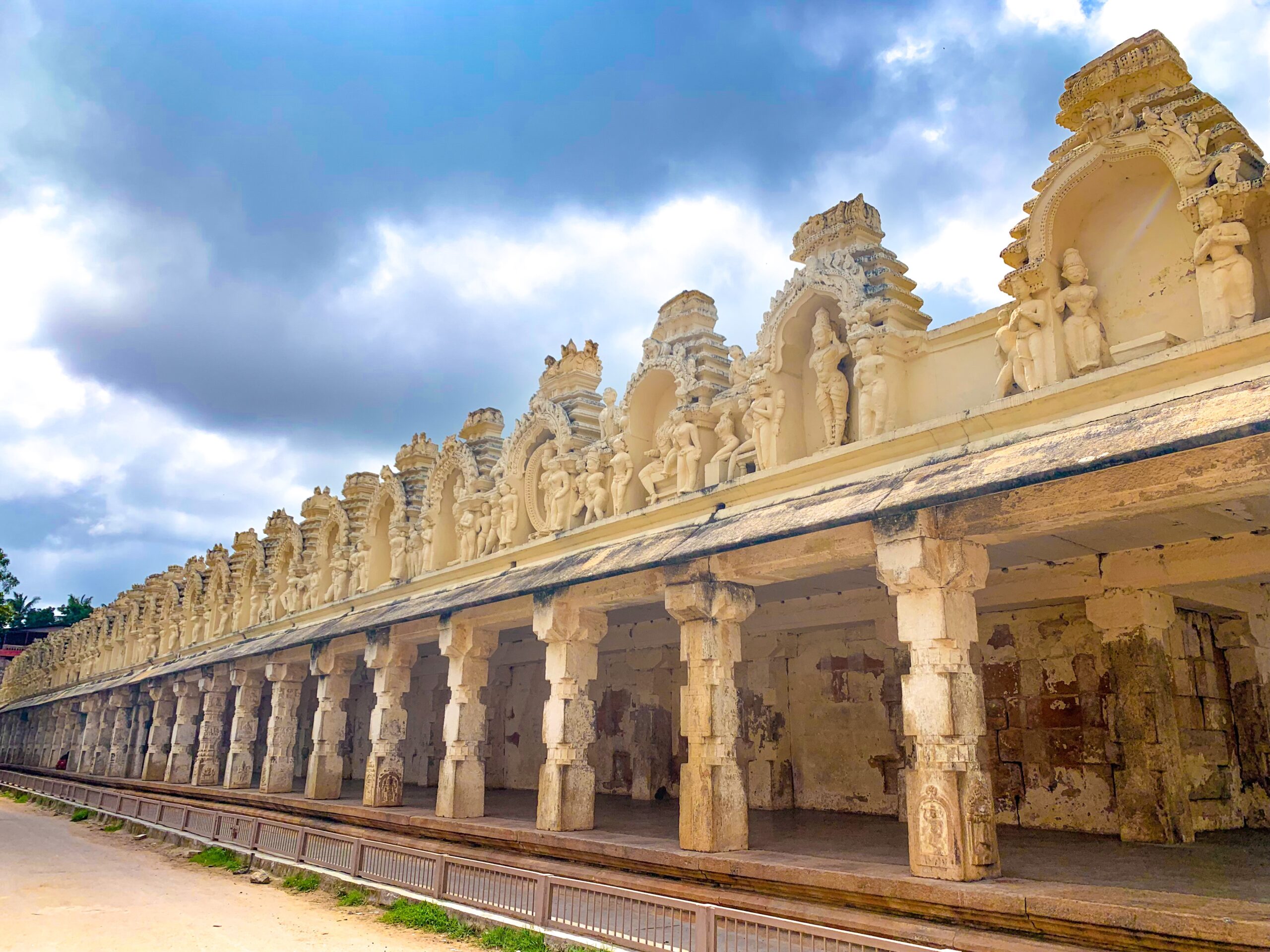
This ancient temple constructed during the Hoysala period (10th – 14th century) has received the patronage from Vijayanagar kings and the Wodeyars of Mysore, who have contributed to the temples wealth in the form of jewellery and crown. The possession of these is in government’s custody and is brought out during the famous Vairmudi festival to adorn the idols during the month of March-April.
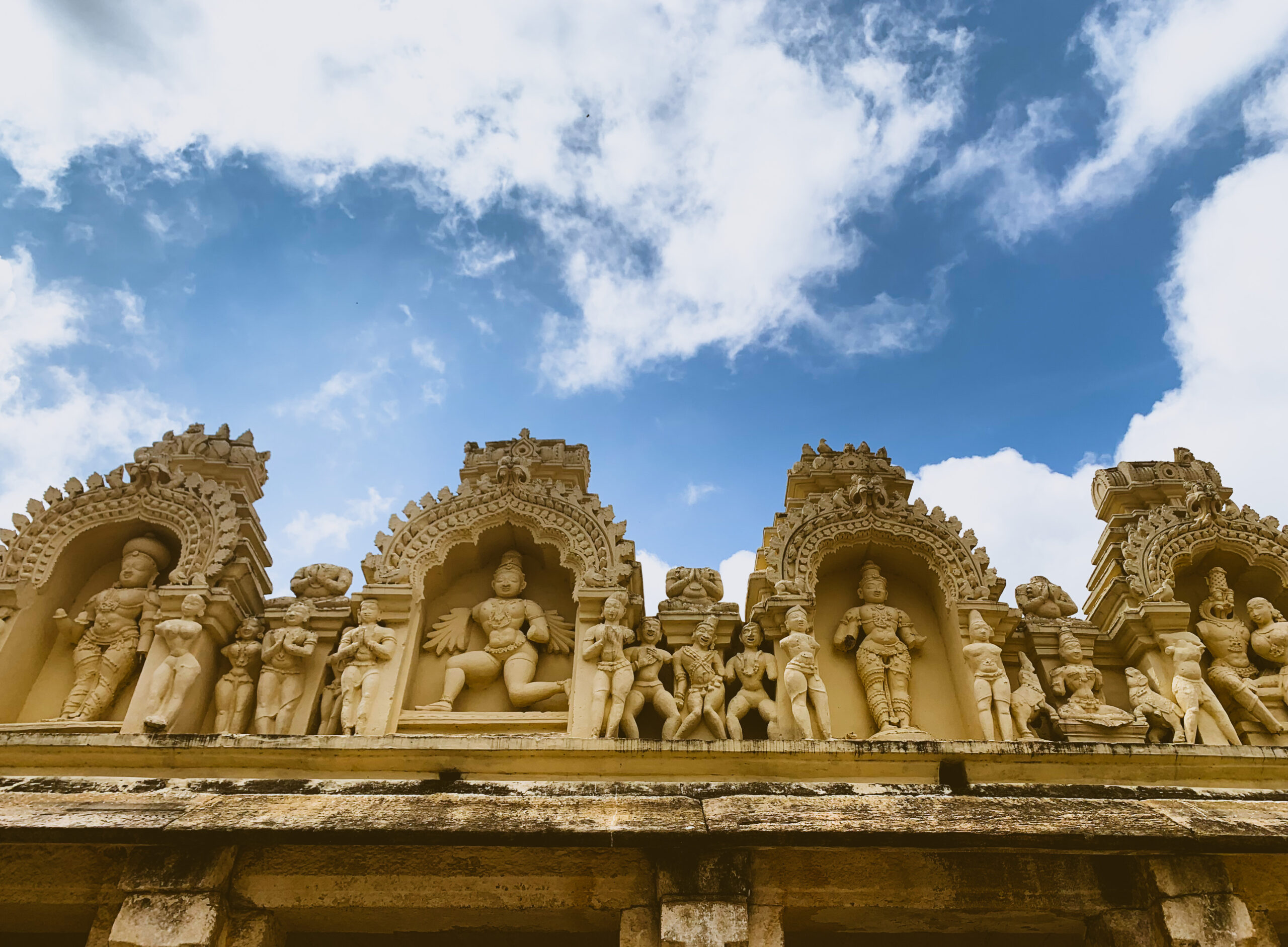
Besides the main deity being worshipped there, the Hindu spiritual leader Sri Ramanujacharya is also revered here and is said to have spent 14 years during the 12th century. The temple idol is believed to be established by him and this has attracted the Iyengar community to settle down in Melukote. Hence besides the deity of Lord Vishnu, people also come to offer their prayers to this holy saint.
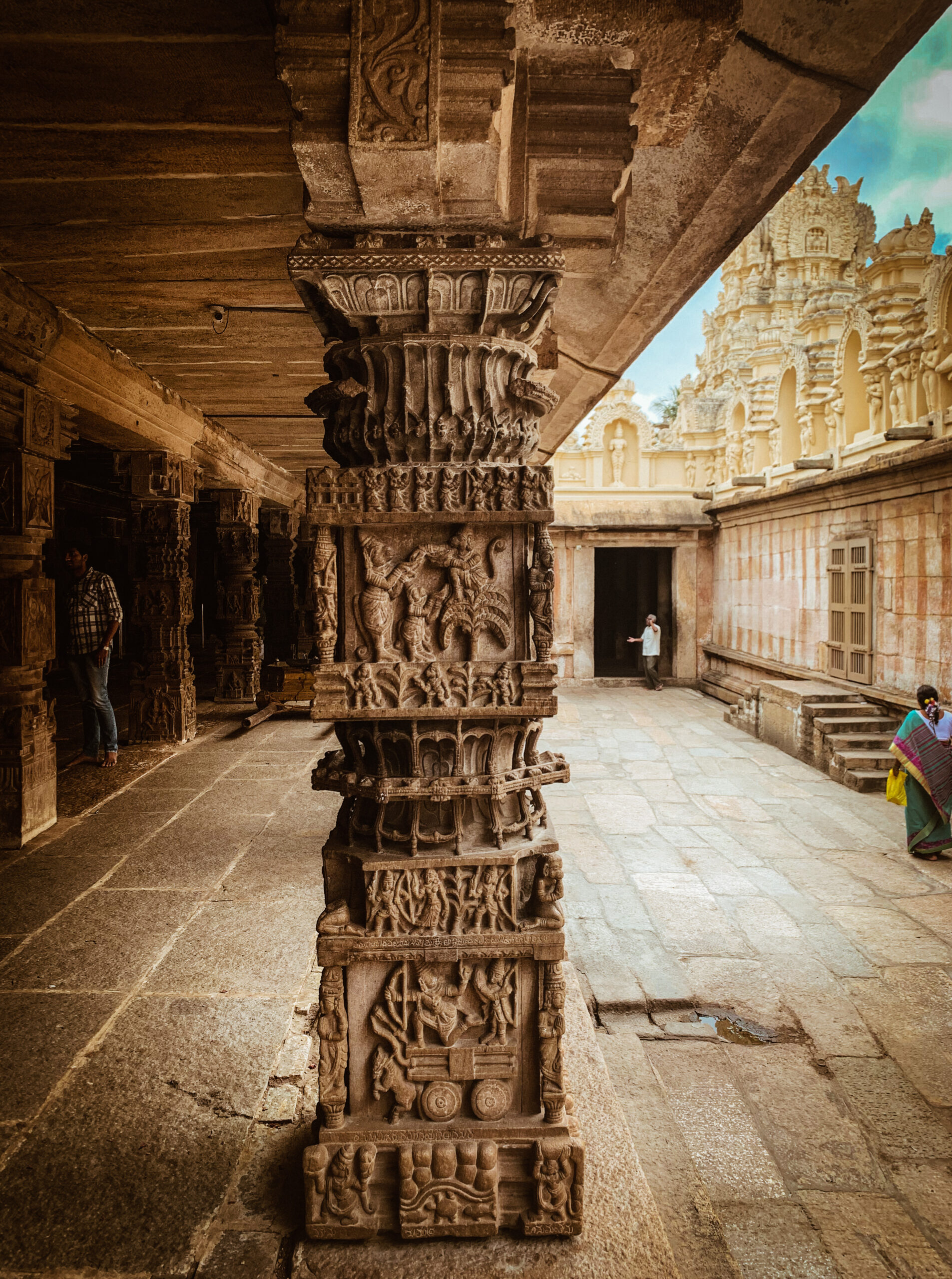
We proceeded to the main sanctum of the temple to seek blessings, where the priests were busy offering special pooja to the main deity. The temple interiors have beautifully carved pillars and stories of Indian epics like Ramayana come alive on it. You can easily spend some time just walking through the corridors and gazing at the beautifully sculpted stones. This is just what we did before proceeding to see other sites of interest outside of the temple.
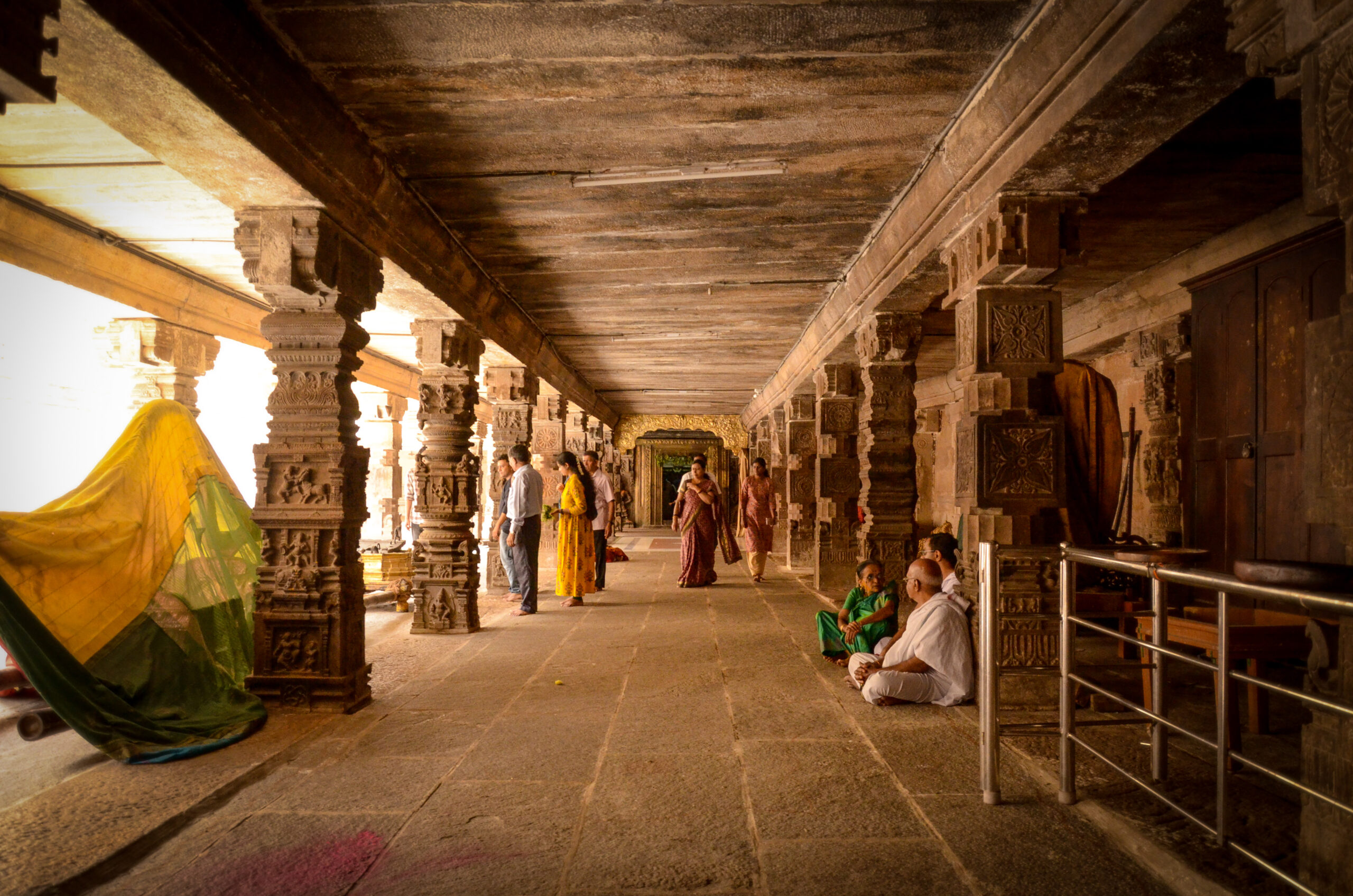
A little away from the temple we come across twin step-wells called the Akka Thangi Kolaga, Akka meaning elder sister and Thangi meaning younger sister. I’m guessing there should be a story to this name something that the local folks would probably be happy to share. Given the heat of the day, a lady sat on the steps with her umbrella, while her children stood near the water gazing at it, out of curiosity.
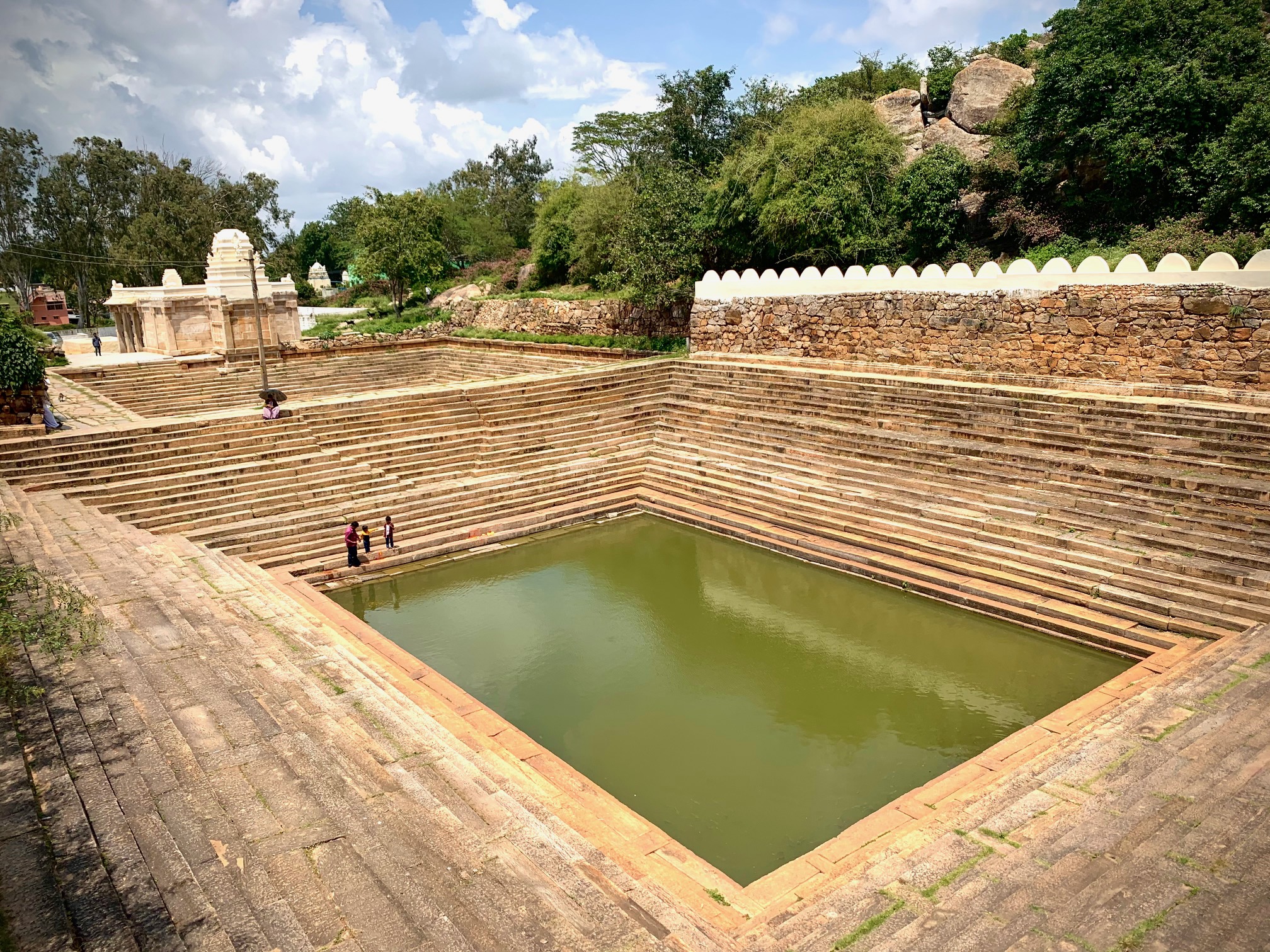
Walking away from this we see a grand entrance way of a temple, left unfinished looming across us. Called the Rayagopuram, this was constructed during the Hoysala period, built with huge granite slabs with carvings on it. If you have watched the Hindi movie Guru or Rowdy Rathore, you will recollect that a dance sequence was shot at this very location. Not surprisingly a couple dressed in traditional attire, were getting their pre-wedding photo shoot done here, while a lot of other tourists were wandering about, some climbing atop the stone steps to get a better view of the place.
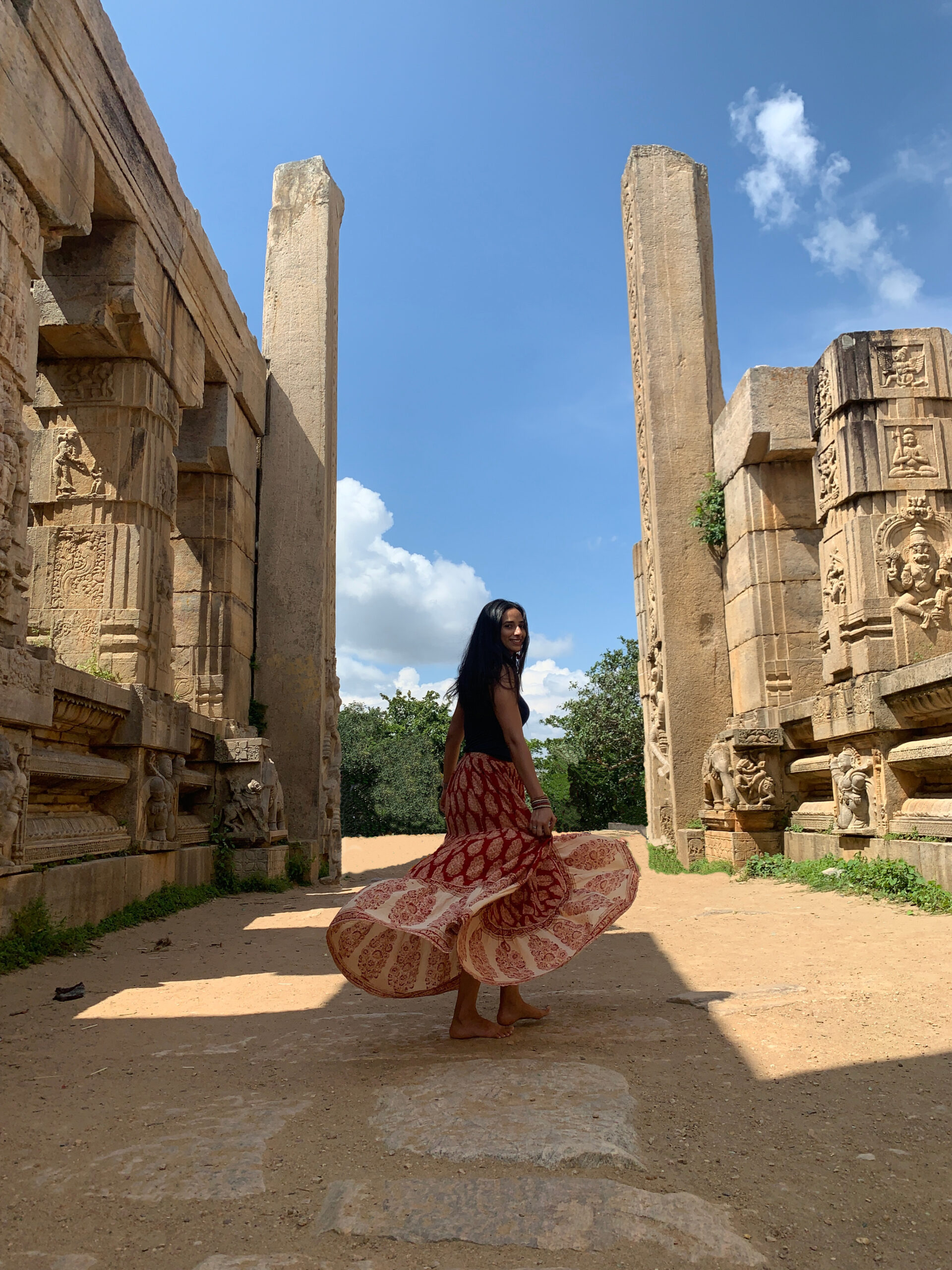
Further away from this attraction is where you can get a good view of Melukote’s surroundings, called the Danushkoti. History has it that this was the place where Lord Rama shot an arrow to the ground, after which water came oozing out to quench Sita’s thirst, when they were wandering around in the forest. The water supposedly doesn’t dry up at all, and a small shrine of Lord Rama can be found here, with his feet carved out on the granite surface. Soaking in the views of the greenery below, we head back to the main temple area, in search of food.
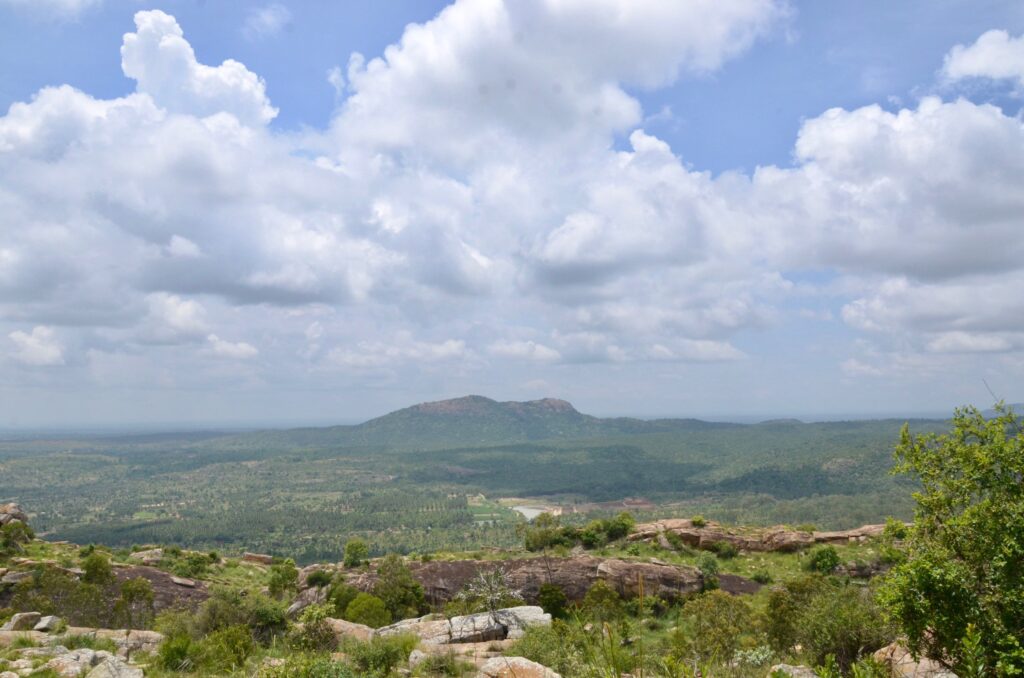
Given that Melkote is mostly occupied by the Iyengar community, the food here is pretty much a specialty prepared by the locals. There are several small eateries called the’ mess’, all catering to more or less the same food but the popular one goes by the name Subbana Mess. Lunch consisted of a fixed menu comprising of Puliyogre (spiced tamarind rice) and Sweet Pongal (rice sweetened with jaggery) which is a delicacy, followed by other items like chapati, rice, vegetables etc.
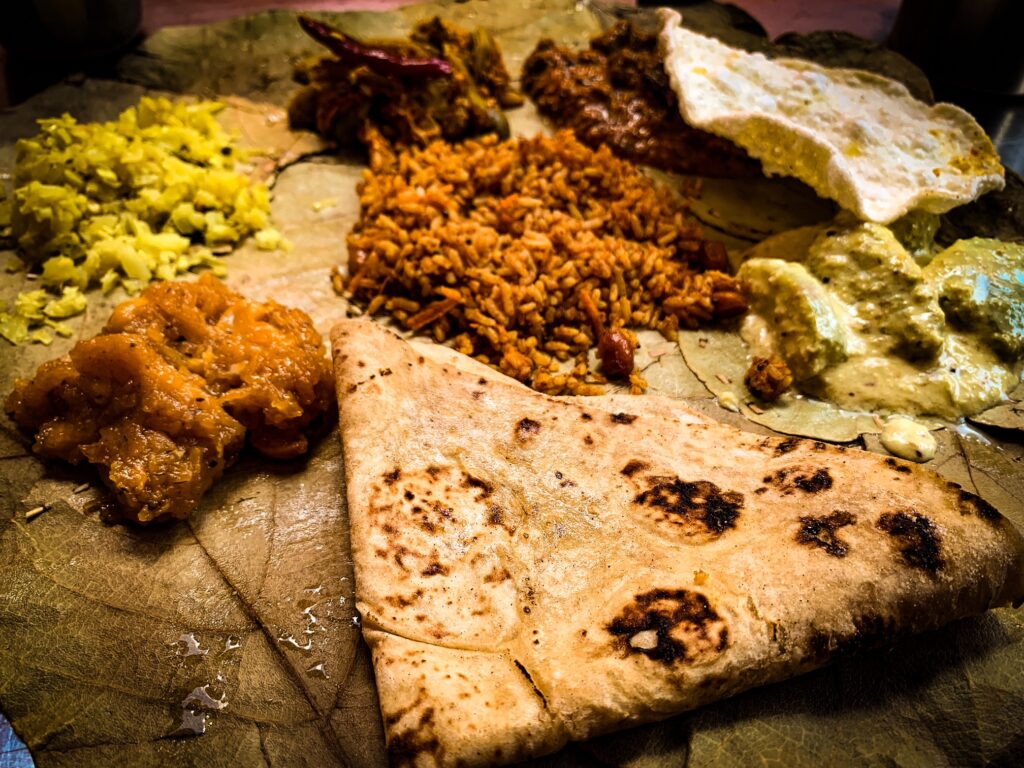
With our stomachs full, we proceeded to see another important temple called the Yoga Narasimha Temple, situated on the hill and overlooking the town. We got the timing wrong for this, as it was closed and should have visited this earlier in the day. This didn’t deter us from making a small climb to the top, after covering much of the distance in the car as far as we could. The climb from the base is about 300 steps and definitely breaks a sweat, but not for the temple priest who carries a vessel full of water from the base to the top, hardly spilling a drop. We are told this is part of his daily routine!
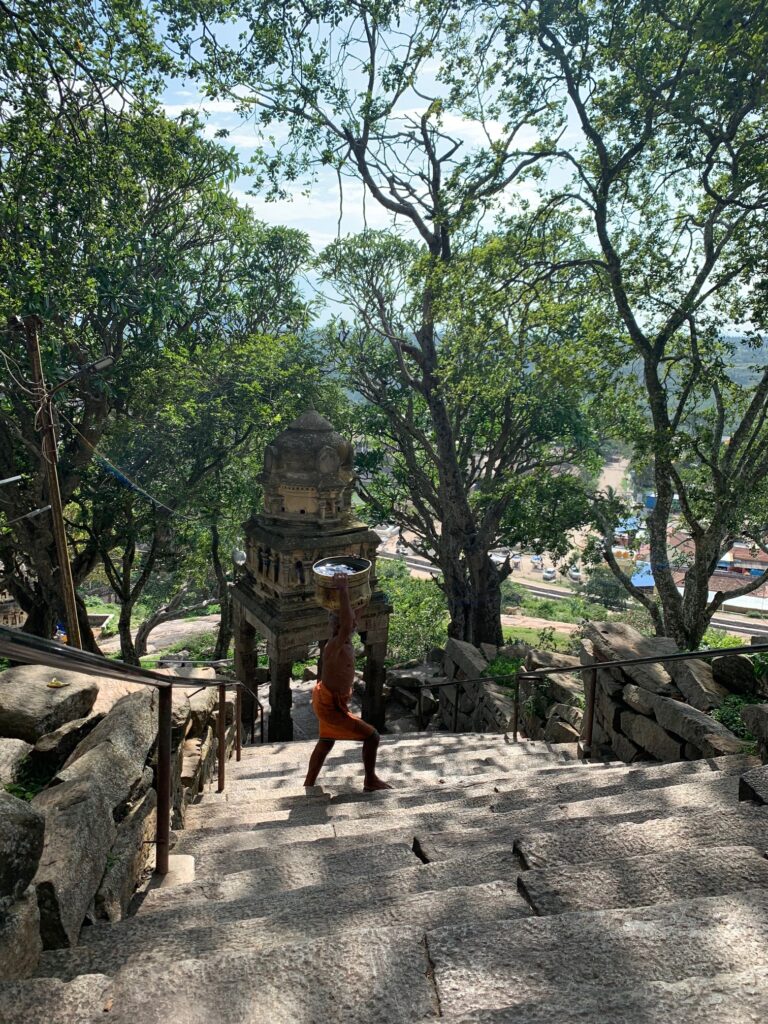
On the way up, you will see vendors seated on the steps, selling spiced buttermilk, alongside some basket weavers, making their colourful creations. I couldn’t resist a purchase and picked up a small flower basket for my mother.
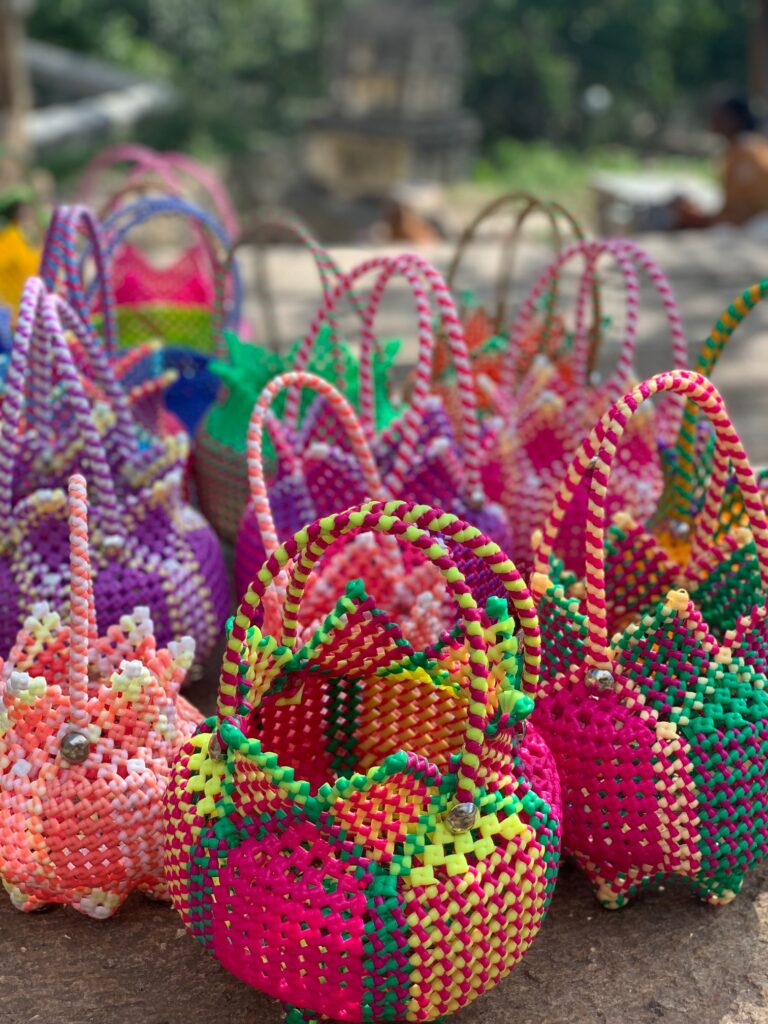
The very name Melukote meaning ‘High fort’ is derived from this temple, which surrounds it and from the top you will get spectacular views of the town below. Even though the temple was closed, the gatekeeper allowed us a small peak into the shrine that houses the deity Narashima, one of the forms of Lord Vishnu, in a yoga posture and hence the name Yoga Narasimha.
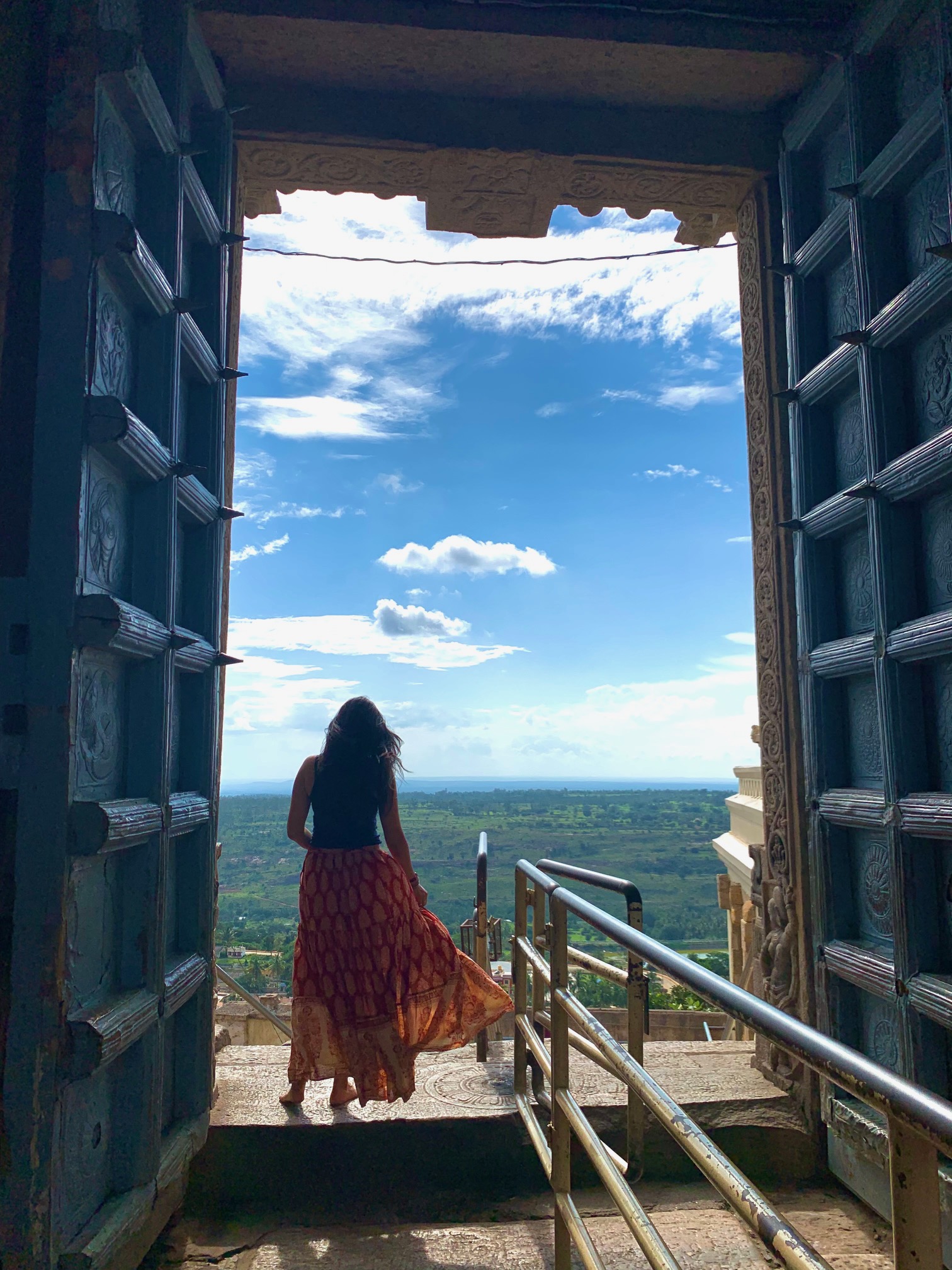
From the top you can also see a very large and beautiful Kalyani (different from the Akka-Thangi stepwell), surrounded by corridors held up by stone pillars. This is where we rested after climbing down the steps. There were few families, where the men and children after having their head shaved were dipping themselves in the water, regarded to be holy. A man blowing his trumpet was offering the service of drawing Lord Vishnu’s religious symbol on the forehead, for a small fee. It was evening already and we decided to make one final stop to a lake nearby for sunset before heading back to Bangalore.
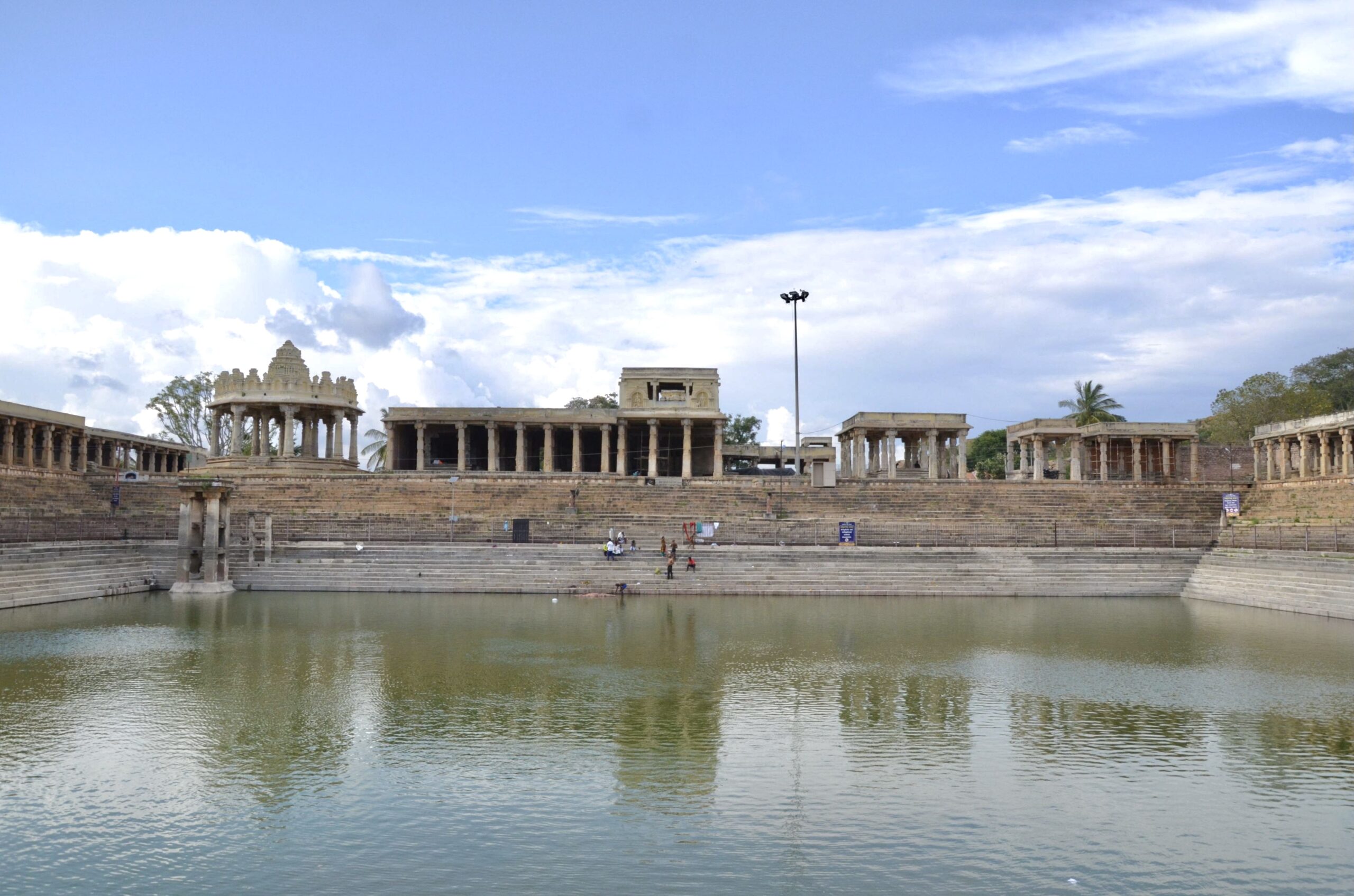
About 30 mins drive away from Melukote town is Thonnur lake. A fairly large lake that serves water for irrigation purpose for the town. It is said to have been developed centuries ago and also has the statue of Sri Ramanujacharya in the surrounding area. We had carried a small picnic basket with some sandwiches and coffee. Although we couldn’t get to spend much time here, we watched the sun go down, and then made our way back to the city. It was pretty late but we didn’t mind the drive back after dark.
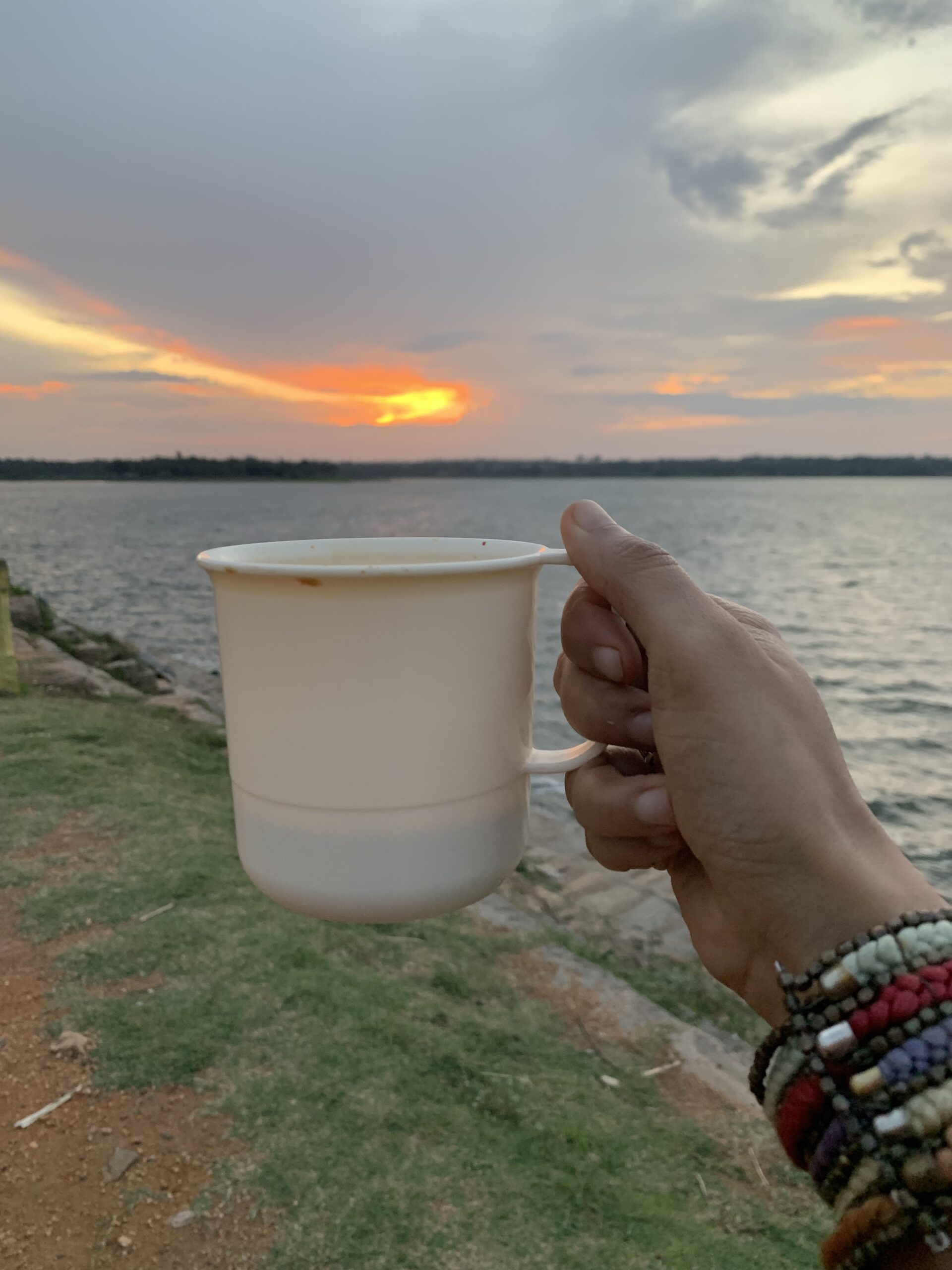
Melukote made a perfect day trip, full of adventure and a longing to go back again.
Route from Bangalore
Bangalore to Melukote via the Mysore road: Bangalore –> Nice road –> Maddur –> Mandya –> Beechanahalli –> Melukote
Bangalore to Melukote via Mangalore road: Bangalore –> Nelamangala –> Kunigal –> Yadiyur –> Nelligere –> Nagamangala –> Melukote
Some handy tips for visiting Melukote
- Plan to leave early if you are travelling from Bengaluru. The distance from Mysuru is only about 50kms.
- The temples have timings. Its best to visit them first and then head to the rest of the other attractions.
- Out of the two routes, I would recommend taking the one through Nelamangala. Mysore road is presently undergoing expansion and traffic can stall you here for a long time.
- Don’t expect fancy restaurants in this place. The eateries serve good local food and are hygenic. If you have specific preferences, its best to take packed lunch.
- Summers can be very hot. Carry sunscreen, sunglasses, hats and stay hydrated.
- Having your own vehicle is advantageous if you plan to visit the many attractions here. It saves time.

